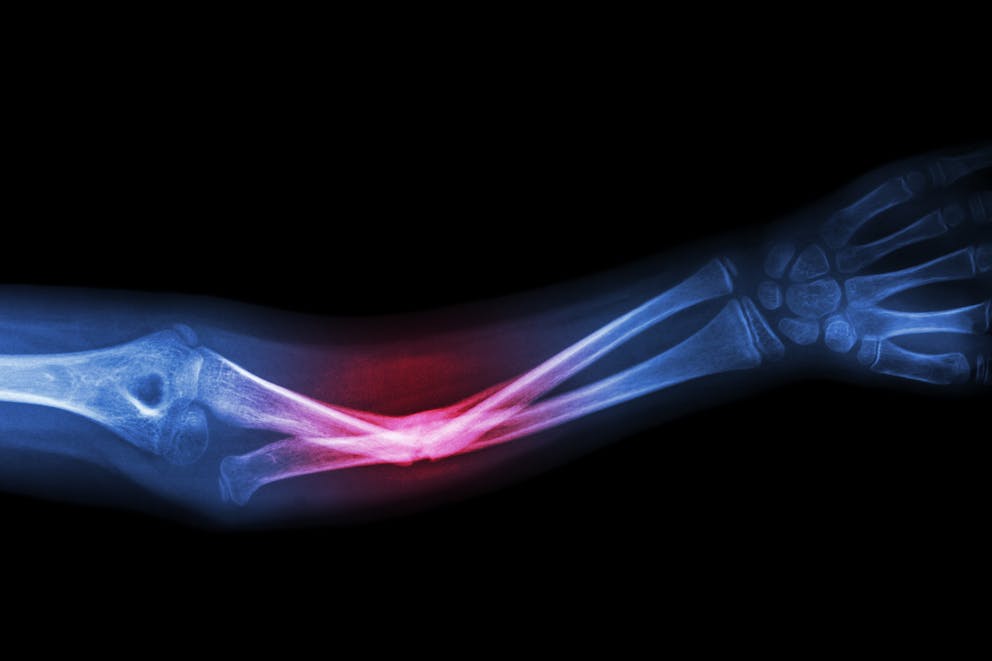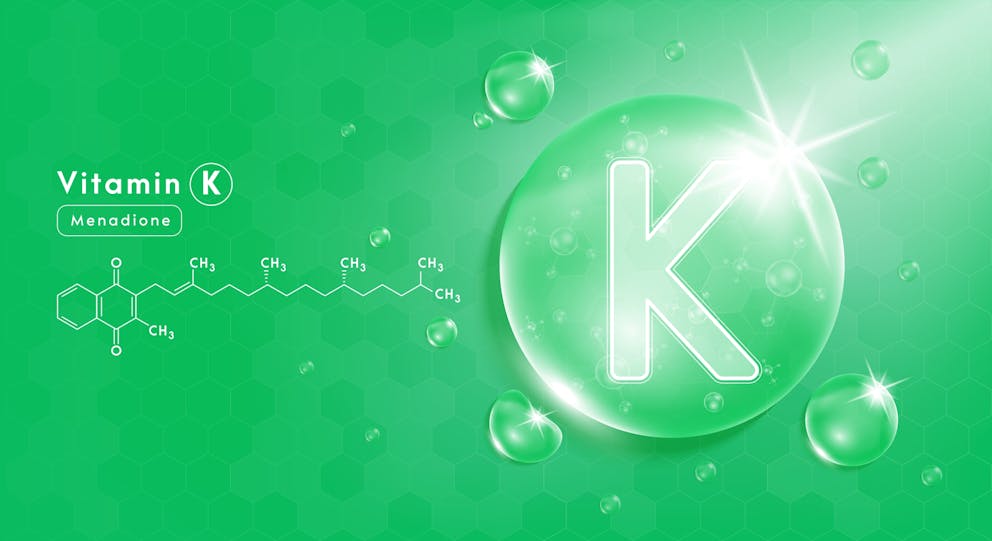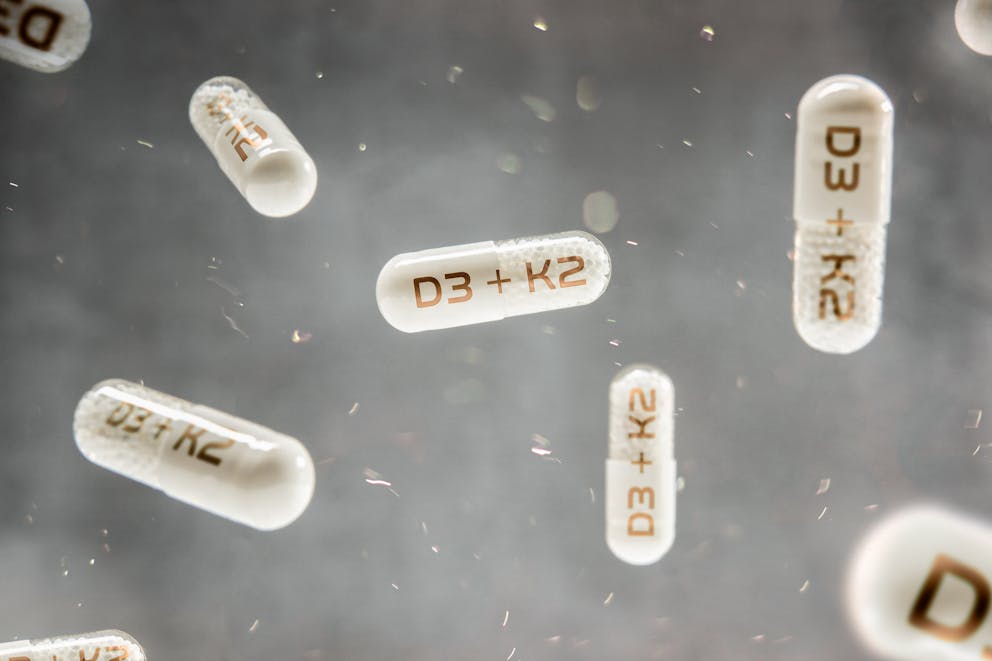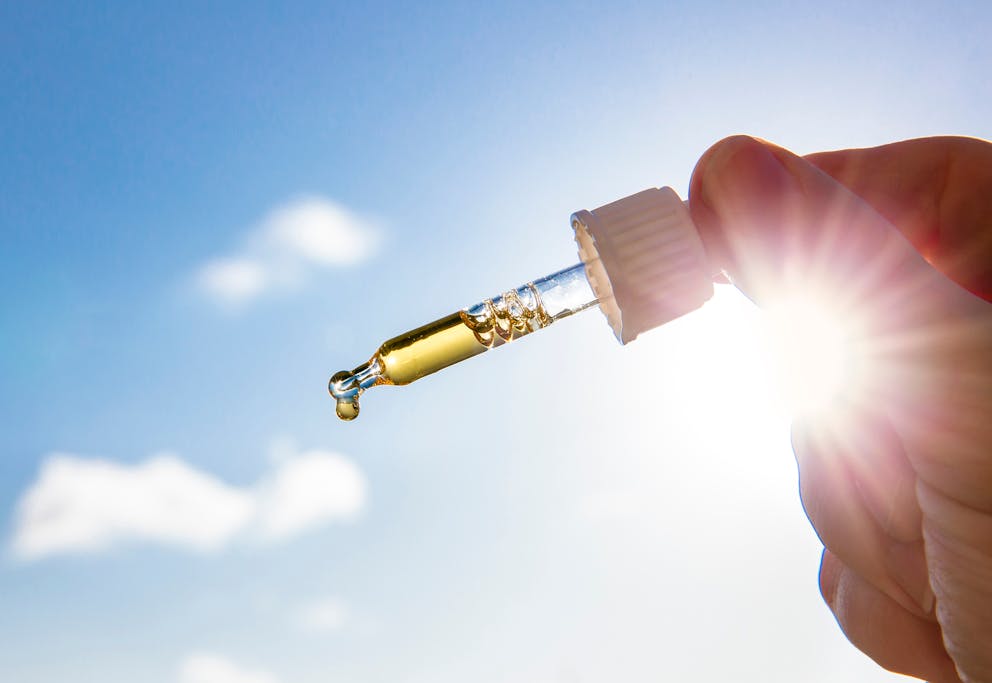What's the Optimal Vitamin D Dose for Fracture Healing?
What's the optimal vitamin D dose for fracture healing? A daily 5,000 to 10,000 IU dose of vitamin D3 stimulates bone tissue formation and supports the bone fracture healing process.
Learn more about the benefits of vitamin D for bone health and the important role vitamin K2 plays in fracture healing.

The importance of vitamin D for fracture healing
Vitamin D is crucial for maintaining bone health, and it’s well established that vitamin D deficiency is linked to low bone mineral density, soft bones, and increased fracture risk.
Vitamin D activates calcium-binding proteins needed to facilitate the intestinal absorption of calcium, which is essential for forming bone tissue and plays a vital role in bone repair.
Calcium is a critical component of the bone matrix, which provides skeletal strength and rigidity and is needed to develop and maintain healthy bones.
Research published in the National Library of Medicine found that lack of adequate vitamin D impairs the absorption of calcium, significantly increasing the risk of calcium deficiency linked to poor fracture healing.
In addition, vitamin D activates osteoblasts, a specialized type of bone cell that helps heal a broken bone by depositing bone matrix at the fracture site.
Watch the video below to learn about the best diet for healing a fractured bone.
The Best Diet for a Healing Bone: Fracture, Surgery or Trauma
What are the optimal vitamin D levels for bone health?
Vitamin D levels can easily be assessed with a simple blood test measuring 25-hydroxy vitamin D, a blood marker that reflects the body’s overall vitamin D status.
Most healthcare providers suggest that vitamin D levels of 20 ng/mL (50 nmol/L) or higher are associated with a reduced risk of bone-related issues such as osteoporosis.
However, a study published in Nutrients found that maintaining 25-hydroxy vitamin D concentrations of 40 ng/mL (100 nmol/L) or above is linked to better skeletal health and a significantly lower hip fracture risk in later life.

The synergistic effects of vitamin K2
While vitamin D stimulates calcium absorption, vitamin K2 is critical for transporting calcium into bone tissue.
Vitamin K2 activates a group of proteins known as matrix Gla proteins, which bind to calcium and deposits it into the bone matrix.
Taking calcium or vitamin D supplements without optimal vitamin K2 status can lead to elevated blood calcium levels and, at the same time, increases the risk of inadequate skeletal calcium stores.
Because of the synergistic benefits of vitamin D3 and K2 for bone health, combining vitamin D supplementation with vitamin K2 has been found to reduce fracture risk and skeletal issues.
A study published in the International Journal of Innovative Research in Medical Science found that individuals with low vitamin D3 and K2 levels were at increased risk of bone fractures and that supplementation with vitamins D3 and K2 can improve fracture healing time.

Vitamin K2 and vitamin D dose for fracture healing
While general recommendations suggest a daily dose of 600 IU of vitamin D, research published in Clinical Cases in Mineral and Bone Metabolism found that 600 IU isn’t enough vitamin D to promote fracture healing.
Depending on your health status, average sunshine exposure, and skin tone, it may take between 5,000 and 10,000 IU of vitamin D daily to enhance calcium absorption and bone fracture repair.
Because vitamins D and K2 work in synergy, the optimal dose of vitamin K2 for bone health depends on your vitamin D dosage.
The best ratio of vitamin D to K2 is 1000:10, which means that you should take 10 mcg of vitamin K2 for each 1000 IU of vitamin D. For example, if you take 10,000 IU of vitamin D, an ideal vitamin K2 dose would be 100 mcg.
It can be challenging to achieve the correct ratio when taking vitamin D and K2 supplements separately, and it’s best to choose a supplement that contains both vitamin K2 and vitamin D3, the same potent form of vitamin D produced in the body.
While calcium supplementation isn’t always beneficial, healing a broken bone may benefit from taking calcium supplements in combination with vitamins D3 and K2 to speed up bone remodeling and enhance fracture healing processes.

Causes of vitamin D deficiency
Vitamin D3, also known as the sunshine vitamin, is naturally produced when the skin is exposed to ultraviolet B (UVB) rays in sunlight.
Lack of adequate sunlight exposure is a leading cause of vitamin D deficiency, and individuals who live in regions with limited sunshine and those who spend a lot of time indoors typically don’t produce enough vitamin D to maintain healthy levels.
Some foods, such as oily fish, egg yolks, and cod liver oil, contain vitamin D. However, these dietary sources don't provide enough vitamin D to maintain adequate levels.
Vitamin D is stored in fat tissue, and excess body fat can trap vitamin D in fat cells. This explains why being overweight or obese is one of the primary risk factors for insufficient vitamin D levels despite adequate UVB exposure.
Darker skin contains higher concentrations of melanin, the pigment that determines your skin color, compared to lighter skin tones. Melanin lowers vitamin D production, leaving individuals with darker skin tones at risk of vitamin D deficiency.
Age is another risk factor for low vitamin D status. The rate of vitamin D production slows down as you age, which makes it challenging for older people to maintain healthy vitamin D stores.

Signs of vitamin D deficiency
Vitamin D deficiency is widespread, and it’s believed that almost half of the population has inadequate vitamin D levels, leaving many at risk of bone fractures and other skeletal health problems.
“Vitamin D regulates many physiological functions, and deficiency can manifest in a wide range of subtle symptoms, making it challenging to identify and diagnose vitamin D deficiency early,” explains Dr. Berg.
Here are common signs of vitamin D deficiency:
Fatigue and weakness
Muscle aches
Bone pain
Musculoskeletal issues
Frequent infections
Depression and anxiety
Hair loss
Memory problems
Vitamin D deficiency can have detrimental long-term effects on bone health and greatly increase the risk of osteoporosis, a condition characterized by brittle bones and the primary cause of hip and spine fractures in later life.
If you are concerned about your vitamin D levels or show signs of vitamin D deficiency, it’s crucial to consult a healthcare provider to evaluate your symptoms and conduct blood tests to determine your vitamin D status.

Key takeaways
Vitamin D is crucial for healthy bones. If you want to speed up bone fracture healing, what's the optimal vitamin D dose for fracture healing?
Taking between 5,000 to 10,000 IU of vitamin D3 daily stimulates bone cells to deposit bone matrix at the fracture site and promotes the intestinal absorption of calcium, a critical mineral for repairing a broken bone.
Combining vitamin D3 with K2 enhances calcium deposition into bone tissue and may improve bone fracture healing.
Additional vitamin K2 and D3 resources
FAQ
1. What is the optimal vitamin D dose for fracture healing?
Evidence suggests that taking between 5,000 and 10,000 IU of vitamin D daily supports bone remodeling and fracture healing.
2. Does taking vitamin D help heal broken bones?
Vitamin D plays a crucial role in bone health by facilitating the intestinal absorption of calcium, a critical mineral needed for bone development, maintenance, and repair.
In addition, vitamin D activates osteoblasts, a specialized type of bone cell that deposits bone matrix at the fracture site, which is an essential step in the bone repair process.
3. How much vitamin D should I take to heal a broken bone?
Taking between 5,000 and 10,000 IU of vitamin D daily can improve bone building and may speed up fracture repair processes.
4. Which form of vitamin D is best for bone healing?
Vitamin D3 is the same form of vitamin D that’s produced in the body in response to sunlight exposure.
Compared to vitamin D2, a synthetic form of vitamin D, vitamin D3 is generally considered more effective at raising and maintaining vitamin D blood levels, thereby promoting optimal calcium absorption and bone healing.
5. Does vitamin D3 help you heal faster?
Yes, vitamin D3 may help you heal faster after breaking a bone.
Vitamin D3 regulates intestinal calcium absorption and stimulates bone cells to produce and deposit bone matrix, a critical step needed to heal fractures.
6. Will vitamin D help heal a fracture?
Vitamin D is vital for bone health, and taking vitamin D supplementation can enhance the body’s ability to absorb calcium, which is a critical component of the bone matrix needed to repair a fractured bone.
7. How can I speed up the healing of a bone fracture?
You can speed up the healing of a fracture by resting and immobilizing the affected bone to allow bone tissue growth.
In addition, it’s recommended to take calcium supplements in combination with a vitamin D3 and K2 supplement to speed up fracture healing.
8. What vitamins are good for bone fractures?
Vitamin D3 and K2 are essential for bone health, and maintaining adequate body stores of these fat-soluble vitamins supports bone repair and fracture healing.
In addition, adequate levels of vitamin C are needed to produce bone collagen, a structural protein that forms a fracture callus, which serves as a bridge that connects the broken segments of the bone.
9. Does vitamin K2 support strong bones?
Vitamin K2 plays a crucial role in bone health by activating proteins that transport and deposit calcium into bone tissue.
Maintaining adequate levels of vitamin K2 supports strong bones and has been found to reduce the risk of bone fractures and osteoporosis.
10. Does vitamin K2 help heal fractured bones?
Vitamin K2 is needed to redirect calcium from the blood into bones, which promotes bone building and repair.
Evidence suggests that maintaining adequate vitamin K2 helps deposit calcium into bone tissue, which is linked to enhanced bone fracture repair processes.
11. What foods help broken bones heal faster?
A nutritious diet rich in bone-healthy nutrients such as calcium and vitamins C, D, and K can help heal bones faster.
Consider incorporating foods including dairy products, leafy green vegetables, oily fish, and fermented foods such as sauerkraut, natto, and kefir to enhance the body’s ability to repair a broken bone.
12. What are the five stages of fracture healing?
The first stage of fracture healing is hematoma formation, characterized by blood clots around the fracture site, followed by the inflammation stage, which stimulates the movement of immune cells and growth factors into the bone.
The third and fourth stages of fracture healing are soft callus and hard callus formation, followed by bone remodeling, which involves the deposition of new bone tissue around the callus.
13. What are the signs you need vitamin D?
Common signs of vitamin D deficiency include frequent infections, muscle aches, bone pain, unexplained hair loss, acne, and mood disorders such as depression.
14. Is vitamin D2 or vitamin D3 better for bone fractures?
Compared to vitamin D2, vitamin D3 is generally considered the more potent form of vitamin D and more effective at maintaining optimal vitamin D linked to better bone fracture healing and overall skeletal health.
Sources
Previous blog
Can Vitamin K2 Dissolve Kidney Stones?Tags

Popular
08/21/2024
55.7K views
02/23/2025
46.8K views
11/18/2024
281.1K views
03/18/2024
11/21/2022




